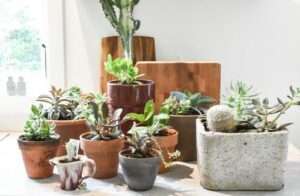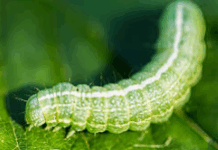 Just like garden plants, houseplants have specific growing requirements. Success with growing plants indoors starts with knowing the conditions of locations in your home and choosing plants that match—just like in the outdoor garden. Here’s a brief guide to identifying your houseplant habitat, with suggestions for plants to try.
Just like garden plants, houseplants have specific growing requirements. Success with growing plants indoors starts with knowing the conditions of locations in your home and choosing plants that match—just like in the outdoor garden. Here’s a brief guide to identifying your houseplant habitat, with suggestions for plants to try.
LIGHT
Most houseplants fall under one of two light requirements: direct light, which is akin to full sun; or bright/filtered light, which is a bit like dappled shade in the garden. Plants for direct light will thrive in a sunny window where the light touches their leaves for most of the day. Plants for bright or filtered light do better in a window with a sheer curtain or positioned farther into the room, away from the window. They can also go in an east-facing window where they will receive the direct light in the morning, when it’s most gentle.
If you can offer a full day of direct light, try cacti and succulents, like agave and aloes, plus coleus, polka dot plant and date palm for foliage. Flowering houseplants for direct light include bougainvillea, mandevilla, hibiscus and passionflowers.
If you can offer bright or filtered light, try chenille plant, cymbidium, dendrobium or phalaenopsis orchids, Africa violets and cape primrose (Streptocarpus) for flowers. Great foliage options for you are rex begonias, caladiums, spider plant, dieffenbachia, piggyback plant and stromanthe.
Is the light limited in your home? Try plants with large, dark green leaves, including cast iron plant (Aspidistraelatior), peace lily and aglaonema, or different types of ferns.
TEMPERATURE
Many houseplants—especially those grown for their flowers—originate in tropical locations and therefore enjoy warm to hot temperatures. There are some, however, that can take, or even prefer, cooler climes. When thinking about the temperature in your home, keep in mind that it may fluctuate. The bathroom can be very warm and humid while you shower, then cool for the rest of the day. Entryways may be cold or subject to frequent drafts. Take time to observe any area at different hours before choosing a plant for it.
If you have a room that’s consistently warm, try tropical plants like citrus, bougainvillea, banana and mandevilla. If you blast your heat, though, remember that the air may become dry and you’ll need to increase the humidity for these plants.
If you keep your thermostat on the low side in the winter, look for plants that originate in temperate forests, like piggyback plant, fats, jasmine, English ivy, Norfolk Island pine and some ferns. Desert cacti and succulents can also do well in cooler northern homes, where the lower temperature will keep them from putting on spindly growth in winter’s weaker light.
YOURSELF
At the end of the day, your choice in houseplants really depends on your level of enthusiasm and the time and effort you’re willing to commit to them.
If winter gets you down because you can’t be out in the garden, high-maintenance or finicky houseplants like orchids or gardenia may fill the void, or you might build a large collection of easy yet diverse plants to keep you busy.
On the other hand, if you enjoy winter’s respite from planting chores or it’s your time to catch up on other commitments and hobbies, pick something that thrives on neglect, like succulents, sansevieria, pothos and trailing philodendrons.
MEGHAN SHINN www.hortmag.com/




